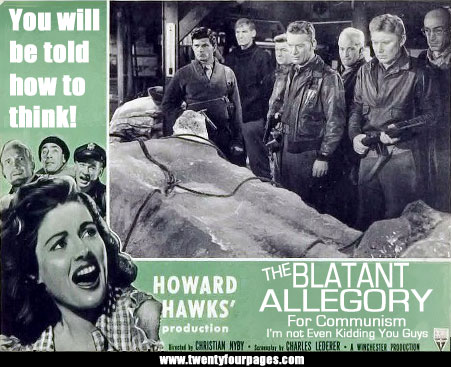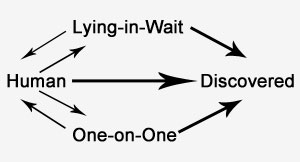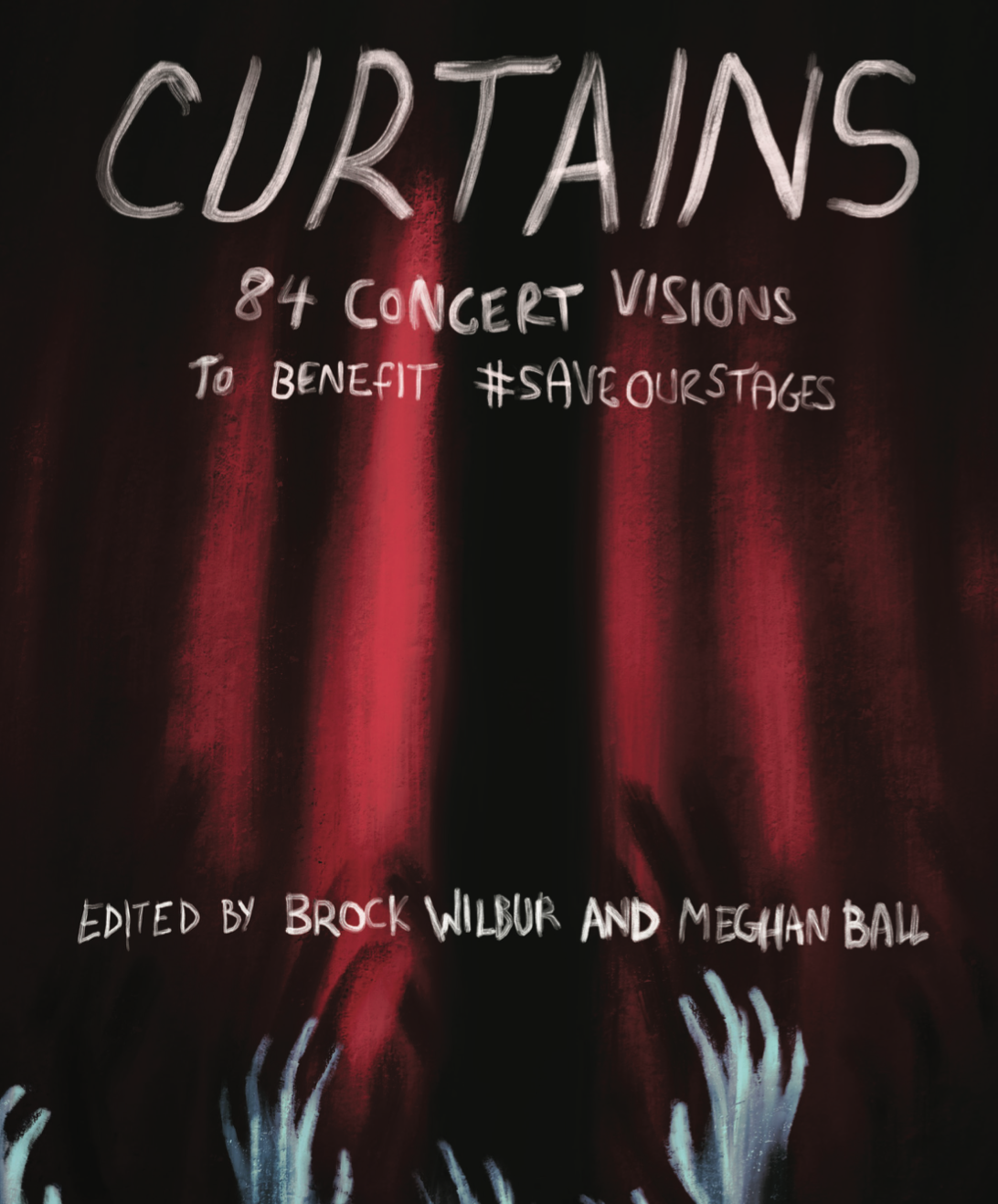Dreams of a Better Game
The Thing
So, I have a new article up over at the always fabulous Twenty Four Pages. This time around, I’m comparing pretty much every iteration of the novella Who Goes There? (otherwise known as The Thing) in an attempt to see which one does it best. Here’s a hint: the 1950's don’t do too well.

Seriously, screw this decade right in its ear hole
Anyway, before, during, and after my review, I had time to reflect on the absolutely shitty game that was released at the dawn of the millennium. Forever sullying the name of The Thing, the game was a generic 3rd person action game in the vein of Half-Life, Resident Evil, and Tomb Raider if those games had a baby which was weaned on paint thinner and terrible gameplay. I think it was the very first game that I legitimately was let down by. And what made it even worse was the fact that a lot of reviews gave it fairly high marks for a game that was buggy as all hell.
To give you an example of its bugginess, one of the first missions in the game requires you to heal a dude so that he trusts you and joins your squad of puking bastards. After going through the rigamarole of finding a medical kit and dragging it back to the dying idiot, I went through the motions of healing him. His health shot up to 100%, he thanked me, and then promptly died, making me fail the mission. This came right on the heels of a “scary” cut-scene triggering... but the spooky head-monster-Thing glitched out and never appeared. I basically got to witness a camera angle change and... that’s it. Quality!
But I still think that John Carpenter’s The Thing deserves an awesome game. And, lacking in any training in the matter but with a wildly active imagination, I thought I’d do what I did with The Hunger Games and dream of a better game.
So, first, we need to scrap linking it to the movie in terms of narrative. What needs to be done is make this thing it’s own creature (no pun intended – I take talk of goopy metamorphic aliens very serious). So we have an Antarctic research station with an entirely new cast of characters. Same time period, but we’re basically dealing with an alternate universe where MacReady and the others are off enjoying not testing blood and watching dogs get digested.
I think it may actually work the best if we started off where the prequel does. Yes, it would be a Norwegian base, but once again, we’d have entirely new characters. This would help set up for a logical sequel if sales permitted it. Also, it doesn’t make a whole lot of sense to just repeat John Carpenter’s version when we can have our own go at it.
You get a choice of three starting characters with different skill sets and stats. You have the mechanic, who can repair vehicles easily and keep the station running in times of stress. He/she can also destroy/damage the same things if they deem it appropriate. There’s the biologist, who can use the computers for different purposes, including determining blood tests or weaknesses of the various Things, as well as heal wounds and stave off infection (potentially – I don’t want the game to turn into a doofy “It’s a virus!” pile of crap). Then there’s the paleontologist, brought in to help excavate the alien because people are terrible at realizing bad ideas. His/her main focus is a jack-of-all-trades character. But one of the main things that separates them is their inherent trust stat: the mechanic is a likeable shmo, the biologist is a touch weird but makes a lot of friends if people are hurt, and no one really knows the paleontologist that well.
So there’s going to be a lot of Non-Player Characters (NPCs). They are all unique and have different stats, just like the Player Characters (PCs). Some of them are kind of stupid, and will always trust a specific character. Others are assholes and will give others a perpetual stink eye. They also have routine that can be interrupted randomly – sounds, restroom break, exhaustion, etc. – so they will most likely be doing certain things at certain times. This is where really knowing the base and the characters will come in handy – if you find the cook goes to the storeroom by himself at the normal time, but is followed by, say, the radio guy who you know hates his guts – you may want to alert someone else or attempt to intervene. And, hey, if you’re not quite sure who’s who, with a simple click of a button, all available data you’ve collected thus far about the character pops up, pausing time and allowing you to best determin what to do.
But let’s carry on with our game, shall we? Regardless of who the player picks, all three a present in the game. The game begins with the paleontologist arriving on a helicopter before anyone leaves to go excavate the aliensicle. This is the tutorial area and highlights the strengths of characters as well as how to interact with others. This will also be a good chance to familiarize yourself with the base before things get really bad. You don’t want to run away from a beastie just to freeze to death outside. But, the best part about this part is that it will be entirely skippable if you want to get to the good stuff.
After skipping the tutorial or working your way through it, the game flashes forward to the night when everything goes south. The creature escapes and the team splits into three squads to search for it. One PC will always accompany a specific squad. The mechanic always goes with the team to check the vehicles, the paleontologist always goes to check on the other equipment, and the biologist heads out to check the dogs. No matter what, at least three random characters are left alone – long enough for the alien to get at least one human or several dogs and convert them.
At some point, the players discover the Thing and kill it in one form. This serves a dual purpose: it teaches the player how to kill the monsters (with fire/electricity), but also sets the stage for discovering what the creature does to living tissue. From there, random events and missions will pop up guiding the narrative. Perhaps something like the helicopter crash in the 2011 prequel happens, perhaps after killing the alien the first night a converted dog is re-introduced to the others. No matter what happens, the story revolves around the increasing tension on the base as more and more people die and more Things start to show up.
Missions aren’t going to be entirely linear, but based around who remains and their trust in each other. They will also be time dependent - a key feature will be the hard time limit of one week to kill all the creatures, unless you radio for help to arrive early. This adds another layer of challenge as you know have exhaustion – yours and everyone else’s – to deal with. Further, each mission is dependent on what’s going on randomly – if a thing damages the generator, you may be called upon to fix it and find a way to barricade the room shut. You can recruit other members of the expedition to help you in your task, but too many people is ungainly... plus, the added danger of definitely having a shape-shifting monstrosity in your team may be too much for some to bear.
Anyway, let’s say you have earned a high amount of trust from the base commander and you haven’t developed a way to test for Thingy-ness. A mission he offers you could be to spy on someone for him, because he’s seen them act suspiciously. This is incredibly dangerous as it can potentially make the target suspect you’re on to them and thus lure you into a trap or you could waste your time while the Things are growing in number. Plus, it’s night, and your exhaustion meter’s low... meaning you’re more likely to pass out or hallucinate noises which can be fatally distracting. Further, if you turn him down, he might just attempt to kill you with that sidearm of his... the same side arm you may get if you happen to find and kill another Thing. Or, you can try to accuse someone you think is acting suspicious, but if your commander agrees and if someone is killed while you’re watching your preferred suspect, you could lose a lot of trust.
Apart from missions that other characters may or may not assign you, you also have missions of your own to attend to. The biologist will need to gather samples of a Thing corpse for study, the mechanic will want to hide the stash of thermite explosives to prevent their theft, the paleontologist may want to... um... do something paleontologisty. Each self-directed mission is drawn from a pool on your objectives screen with up to three randomly generated tasks based on your stats, character, and how the NPCs are responding to you. By the end game, there are a lot of potential scenarios that may come up.
Let’s say that you’re the mechanic and all but two people have been converted. You’re outnumbered, but you’ve got two flame throwers and the commander’s pistol that was... uh... ‘borrowed’ from his accidentally char-broiled corpse. You, as the mechanic, are the most valuable person at the moment – you’ve disabled all the vehicles, and you need to repair the radio tower so you can tell home base not to send anyone out to rescue you. A pyrrhic victory, yes, but unless you can guarantee a sanitized landing zone, it isn’t going to happen.
Anyway, you fend off a few Things, repair the transmitter, and head on up to tell everyone to stay away. The dog keeper rushes ahead to the transmitter, dropping his flamethrower tank, and grabs the radio... only to tell them to come in for rescue. Before you can do anything, he destroys the radio itself and transforms, sending out a howl to his brethren that the humans are cornered and, apparently, quite screwed. Are you prepared for the inevitable boss battle and waves of baddies descending on your position?
So, before we go any further, we should talk about the Things themselves. Since the alien is able to assume any shape, the makers of the original video game thought the best way to represent this was by having about half a dozen interchangeable beasties. In my dream game, each NPC has three Thing forms depending on the situation: one-on-one conversion attempts, found out by the humans, and killed/incapacitated-lying-in-wait. The basic idea is this:

As you can see from this highly detailed chart, I'm very serious about this.
Two of those forms, if undefeated, can revert back to a human form. If you or an NPC, sees someone turn and survives, there’s no guarantee that they won’t turn human in an effort to lower people’s trust in you. This could lead to your (all-too human) character being penned into a shack while innumerable whatsits are eating the rest of the base... before coming for you.
But, more importantly, every NPC and unused PC will be designed, essentially, as a multi-phase Thing-boss fight. Each Thing will be designed for a specific type of attack, behavior, and speed. You can have people basically splitting into smaller creatures or turning into a whirling mass of tentacle death. Failure to stop a fully transformed Thing will quickly reduce the base to rubble and increase your risk of hypothermia. But, sometimes the only way to survive is to have it follow you out of the base, lose it in the storm, and get inside before you freeze – all while hoping the Thing gets lost and dies a shrieking death.
And speaking of the environment, you need to be mindful of it. Certain doors are louder than others, environmental distractions might save your life, and going outside without thermal gear will kill you quickly. And then, of course, there’s the issue of fire. In wooden buildings, fire will spread quickly unless contained. In every environment, smoke will make it difficult to see and will rapidly reduce your health. On top of that, it will be the only thing that can hurt you if you’ve been converted.
Oh, wait, what?
Yeah, in my dream game, being cornered by a Thing is not game over. It completely converts the game into a quasi-stealth game. Only here’s the best part: you don’t have to hide in the shadows at all. As long as you keep your wits about you, transform/convert sparingly, and accuse others at just the right moments (even other Things in order to save your own hide), you don’t die until you’re nice and crispy. Each of the three classes will have the standard Thing forms - including a relatively powerful boss form so you can kill as many of the meddling humans as possible before going down.
In keeping with the nihilist tone of the films, the only good ending is very difficult to achieve. You have to work very hard to isolate and kill the Thing as soon as possible, contact a rescue copter, and burn the place to the ground. All while being 100% sure that was the only alien. You can’t just find and kill the three possible suspects, either. Doing so will reveal that there is a regular murderer as well as an angry polymorphic murderer running around. The more likely ending will be a lone escape or with a few survivors. Unless, of course, you happen to get an escape chopper inbound and, unknown to you, you’re bringing a Thing with you to the mainland. Or, you kill everything and freeze to death in a burned out shack, having saved humanity but paying the ultimate price. Alternately, you manage to kill/convert every last human and simply freeze yourself until someone comes to check on the base you just destroyed.
The purpose of this game is survival. It’s not meant to be a hammy action-fest. Yes, there will be explosions and impromptu barbeques, but at the end of the day the emphasis has to be one paranoia and horror. And you can’t be scared if there’s a specific formula like “wear down the Thing’s health, switch to flame thrower, finish off.” At that point, they’re werewolves from Daikatana, not a unique enemy. The game will be challenging and punishing – but there will be things in place to make sure it is as “enjoyable” a tactical identity-stealing-monster-game can be.
The game can be saved anywhere its “safe”, that is to say, anywhere that people who want you dead can’t do so. This means taking a reading of the trust levels, how the AI is currently looking at you, and the amount of eyes watching you. If everyone thinks you’re human or you’ve proved it beyond the shadow of a doubt, then you can save anywhere you like, provided you aren’t alone with an aggressive Thing. Same goes for if you’ve been converted – people trust you and aren’t tying you to benches, you can save the game. There’s only two hard saves per profile, but the game will autosave in two slots: one at the beginning of a mission and at the other upon the completion/failure of one.
Hard saving, as mentioned, can be done anywhere rather than a specific point or room, because it breaks immersion a touch more than... well... come to think of it, saving in general does. But it’s my game, and I’ll do it my way. The rationale is that having a safe room defeats the point of a Thing invasion. You can just camp out there with a flamethrower, wait for everyone to turn, and then kill them. Or get killed. Either way, that’s not engaging in the least.
Other ways to help mitigate difficulty would be the contextual button-press text help. As I mentioned above, if you think someone is acting weird, you don’t have to go barreling after them half-cocked – press a button, pull up the information you have on them, and determine your best course of action. At lower difficult levels, you have a mini-map so you can at least be sure you know where you’re going. But you’re most useful skill will be... wait for it... screaming.
Things tend to make a lot of noise, but they can be pretty quiet when trying to convert an individual. Which means that your biggest tool, especially early in the game, will be screaming to draw attention to yourself and your ugly friend. Outside of this, there are numerous fire alarms that you can trigger to get people running to you. The trick is to keep the Thing in eyeshot until others arrive - your trust will take a huge hit if people come to help and it looks like you’ve just been in an argument with the cook.
I think the big thing to keep in mind about my non-shitty The Thing is that humanity is effectively powerless. If the Thing reveals itself, it means that you’ve backed a rabid dog in the corner, and it won’t end well. If you find that everyone is just fucking staring at you and you know you’re human, unless you’ve got amazing reflexes, you’re dead. There’s no military rescue coming to wipe the place clean, there’s no formula for a successful Thing-kill. There’s panic, paranoia, and loneliness.
Unlike my dream Hunger Games interactive video entertainment device, I think multiplayer would work really well, especially if you implemented a system which muted microphones at long distances. Essentially, no one has headsets. You can talk to each other when you’re in the same room and hear screams (even if it is “GODDAMN CHEAP ASS GAME!”) when your friends are nearby, but it needs to be limited. Why? Because it keeps with the theme. A player’s goal also changes if they’re converted, and it kind of ruins things if you can either tell your friends “Well, I’m going to be spying on the Things for awhile, seeing as I’m dead now.” But waiting until your friends get the helicopter evac to arrive before revealing your plan... that’s worth ever moment of subterfuge.
Maybe it’s impossible to achieve that in a modern game. In fact, I’m pretty sure the technology just isn’t there. It does seem that every time someone trumps the AI in a game, it is usually referring to making the computer run into walls 60% less than the previous generation did. But maybe that’s a good thing. If someone is going to take this intellectual property and try again, they have to really, really think outside the box. It can’t be Tomb Raider with fleshy blobs (oh, ho ho - I made a funny). It has to be unique. It has to be scary. And it has to be difficult. Everything else is a flaccid rip off of better games.
< PREVIOUS ENTRY • NEXT ENTRY >
Advice • Fiction • Gaming • General Musings • Reviews





